In the semiconductor industry, the fabrication process is a complex process and involves multiple steps to achieve the desired result. Each process step uses different types of equipment. Semiconductor industry equipment uses a specific type of communication protocol called SECS/GEM (SEMI equipment communication standard and Generic equipment model).
High-level architecture of a fabrication factory
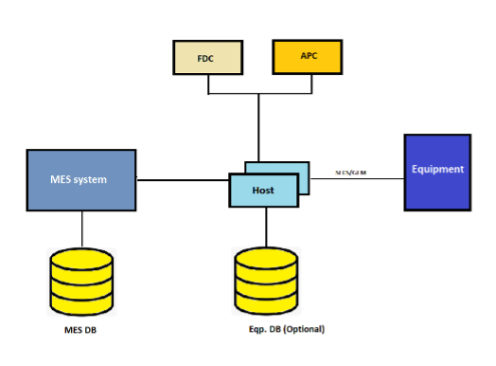
- MES: Manufacturing Execution System is the central part of the production process. It connects with multiple equipment and monitors the progress of material in individual equipment and the entire factory at the same time. It integrates the ERP system (Enterprise Resource Planning) and individual machines.
- MES DB: It is a MES database system that will store the MES related information including recipe information.
- FDC: Fault Detection and Classification is used to continuously monitor the sensor data coming from the equipment and analyze and detect fault to prevent it from reoccurrence.
- APC: Advanced Process Control uses R2R (Run to Run) method that adjust the process parameters based on the incoming and outgoing data from an equipment for a material in combination with process model.
- Host: This is an application that connects with the equipment via SECS/GEM. This application instructs the equipment to process the materials and retrieve the related information.
- Equipment: This is a tool that performs and process the incoming materials based on the instruction given by the host.
- DB: This is an equipment database that can store the material processing information as a raw data form. (Example Metrology tool data).
Some of the SECS/GEM standards we will highlight are E4, E37, E5 and E30.
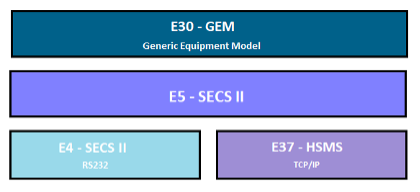
Communication Layer
There are two different types of GEM communication models.
- SEMI E4 standard which is SECS-I a serial communication model that uses RS-232.
- SEMI E37 standard which is HSMS communication model that uses TCP/IP. (There is a subset of E37 standard is called E37.1 HSMS-SS).
Message Structure Layer
The Message Structure Layer is also called the SEMI E5 standard. A typical SECS/GEM message contains a header and a body. The Header contains Stream and Function, and a Body contains a list of one or more data items. Each data items may contain another list of data items. Refer the below example.

GEM Layer
Messages can be categorized into two types, the primary message and secondary message.
Primary messages are usually the request message that will be initiated by one party (Host/equipment). The secondary message will be the response that will be acknowledged by the other party (host/equipment).
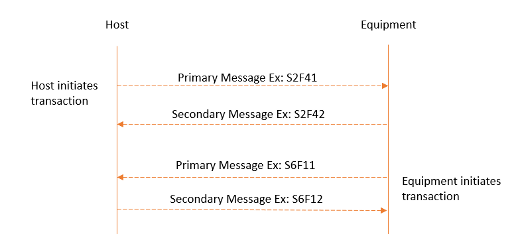
Some common GEM messages include:
- Collection Events – these messages are raised when the equipment processes the substrates using S6F11.
- Alarms – these messages are raised when any problem occurs at the equipment using S5F1.
- Remote Commands – these messages are sent by the host to command the equipment using S2F41.
- Recipe Management – these messages manage the recipes and can sent by either party. Example: S7F3 is the recipe download command.
A typical process flow between a host and the GEM based equipment is explained below.
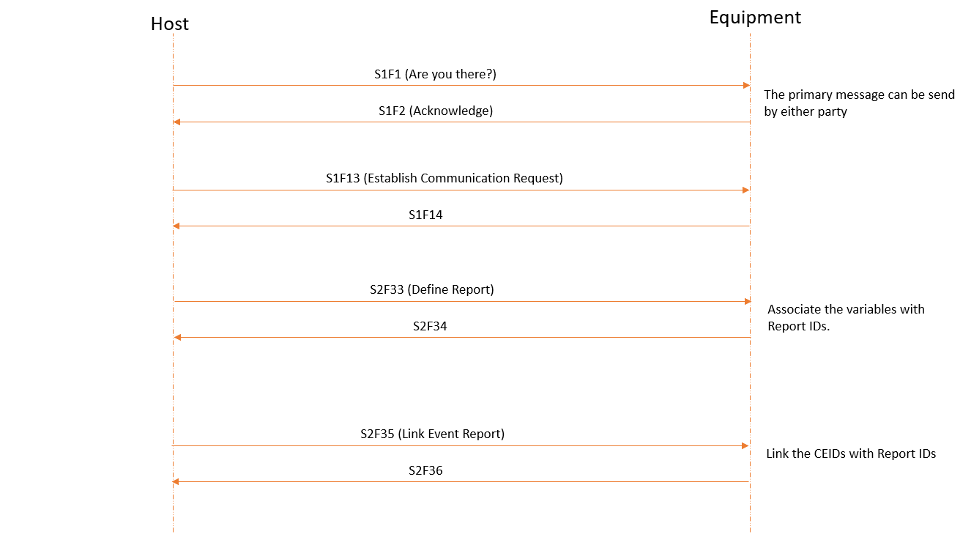
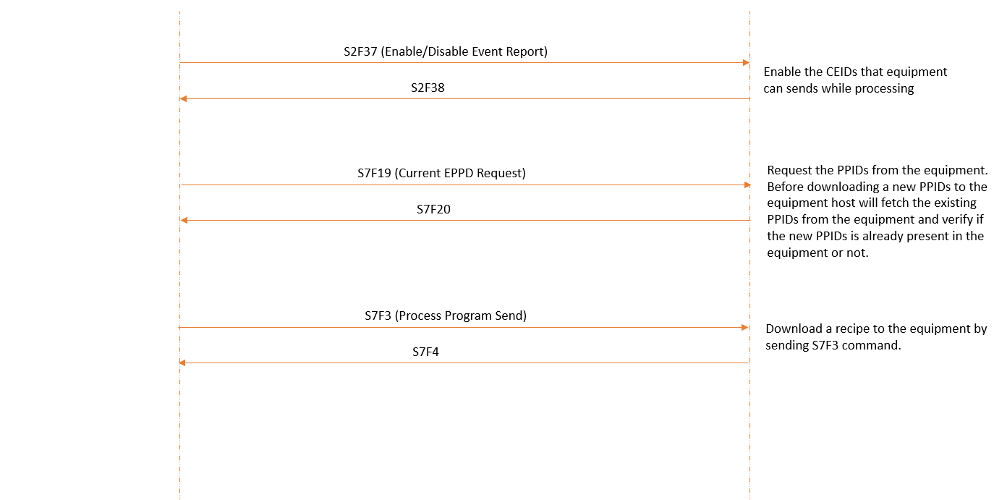
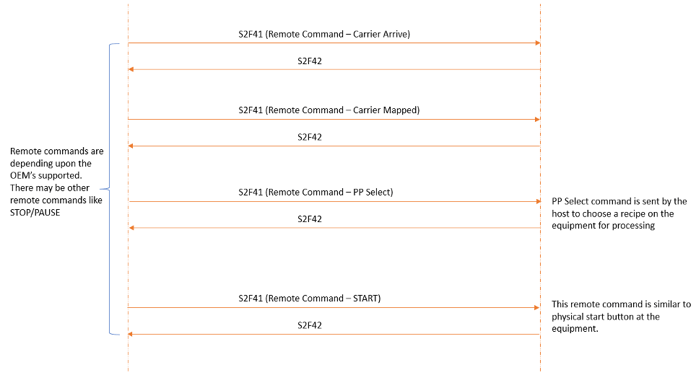
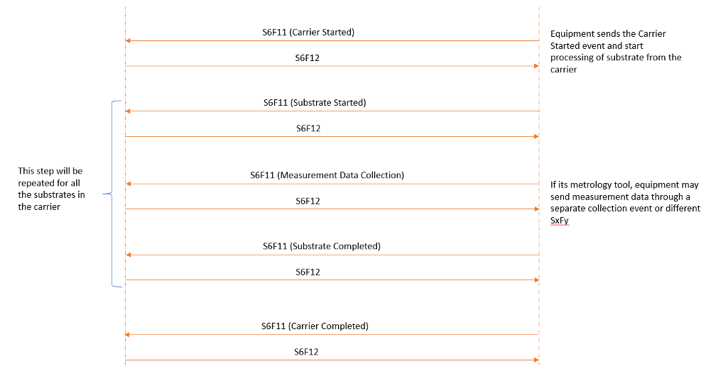
Conclusion
This blog post has summarized how the factory host communicates with equipment using SECS/GEM protocol. At the Cimetrix Connectivity Group of PDF Solutions, we have products for the factory hosts that can easily be integrated with any existing systems with minimal configuration settings. To learn more about our products for the factory host click on the below button.





